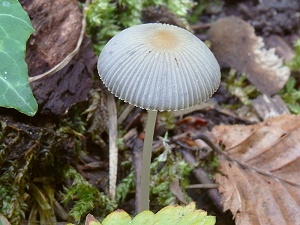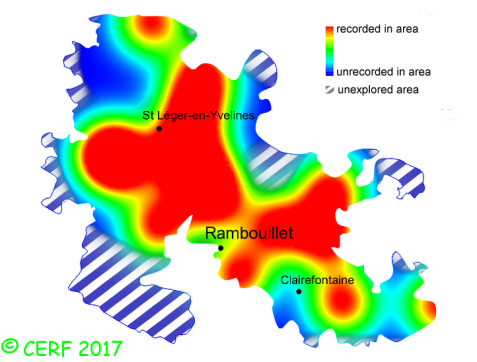| Parasola plicatilis (Curtis:Fr.) Redhead, Vilgalys & Hopple |
|
|
|
|
|
|
The cap is whitish-grey with red-brown centre, club-shaped then flat or with depressed centre; its margin is deeply furrowed. The cap surface is smooth, not viscid nor sticky. The stem is white to buff towards base, without ring. The flesh is very thin, grey-buff, unchanging; its taste is mild; the odour is weak or not distinctive; its texture is fibrous. The gills are pale clay then grey then blackish, free, with collarium, distant (nb of gills per 90° ~ 13 ). The spore print is black (gills not deliquescing). This species is saprophytic. It grows on the ground, in meadows or gardens, in well-lit areas. The fruiting period takes place from April to December.
Chemical tests : none. Distinctive features : Very thin and striate buff cap, with a red-brown then grey central disk; gills turning black when mature, but not decomposing into ink, and inserted on a small disk (collarium) away from the stem; in well lit parks or gardens Parasola plicatilis is infrequent and widely present in the forest of Rambouillet, and is frequent, more generally speaking . | ||
|
page updated on 14/01/18

